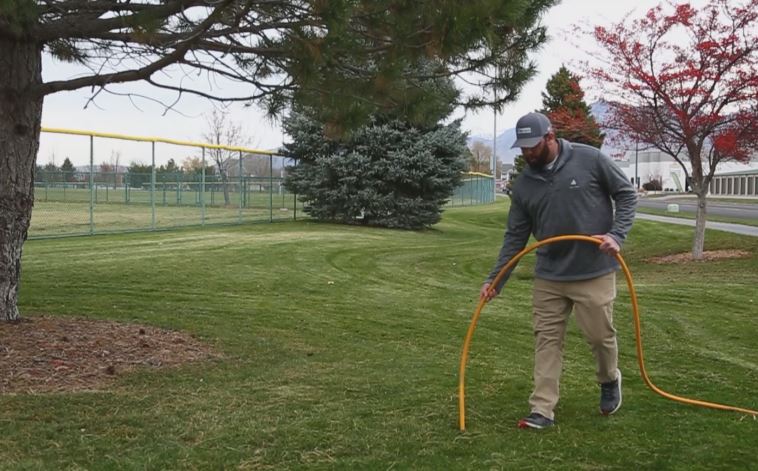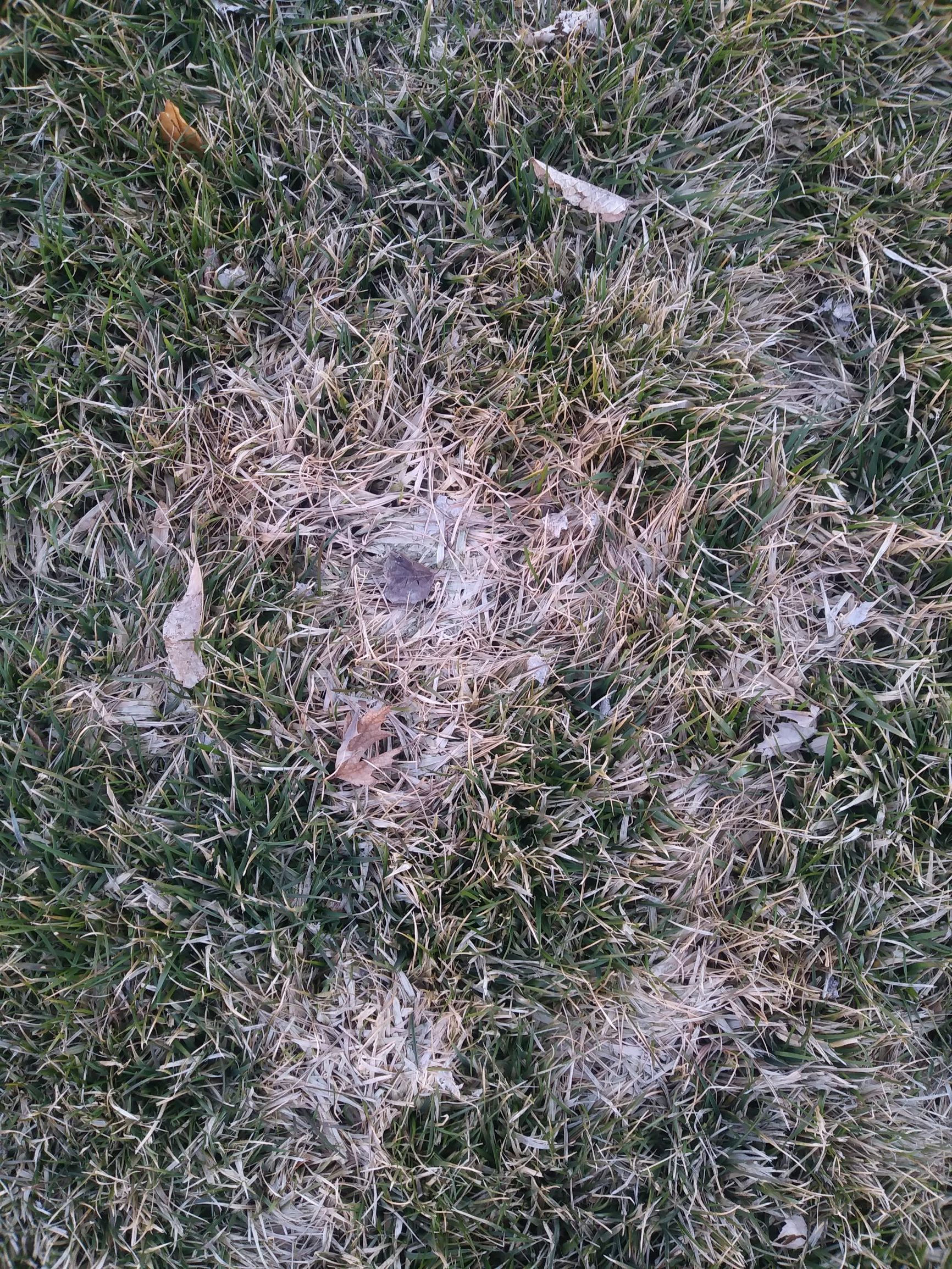Most people think they can take a break from yard maintenance during the winter. This is true to an extent, but there are a few things you should be doing to keep your yard in good repair in winter. Read on to learn some of the best lawn, tree, and pest tips for maintaining your yard during the winter months.
Tree Tips for Winter
#1. Water your evergreen trees.


Evergreen trees need more water than deciduous trees need throughout the year. This is especially evident in the winter because you shouldn’t need to water your deciduous trees during their winter dormancy, but you may need to water your evergreens occasionally.
Evergreens are native to higher elevations where snowfall is heavy and consistent throughout the winter months. When the valleys have ample snow cover, evergreens absorb that moisture over time, but during low snowfall years, evergreens planted in the valleys struggle. As a result, during warm, dry periods in winter when temperatures are consistently above 40°F, your evergreens will need supplemental watering to keep them healthy.
Before watering your evergreens in winter, first ensure that there is little-to-no snow cover around the tree and that the ground appears to be thawing out. Only water when it’s been a week or two without snowfall, temperatures are warm for winter (above 40°F), and no snow is expected within the week. For the best results, water around noon on a warm, sunny day so the water can soak into the ground before temperatures drop in the evening.
The steps you should take to water your trees deeply are as follows:
- Locate the dripline (where water drips onto the ground from the edge of the canopy).
- Turn your hose or another watering device on low and place it at the dripline.
- Leave the hose there for about 10 minutes.
- Following the dripline, move the hose about 3-5 feet from its original position and water for another 10 minutes.
- Repeat until you’ve watered at intervals of 3-5 feet around the entire dripline (for 10 minutes each time).
- For larger trees, move a few steps closer to the tree and water again in a smaller circle around the trunk.
If you water your evergreens during warm winters, they’ll have a better chance of beating drought stress during the spring and summer.
#2. Use road salt sparingly.
Though road salt is vital for reducing ice in the winter, it can be detrimental to your soil and plants. When road salt touches evergreen needles, it dries them out and turns them brown. Road salt also drains nutrients from soil and increases soil alkalinity, preventing tree roots from absorbing necessary nutrients. Use road salt sparingly this winter and be especially careful not to spread salt near your evergreen trees! This will help keep your evergreens healthy throughout the year.
Lawn Tips for Winter
#1. Limit snow piles on the lawn.


When most people shovel their walkways in the winter, they leave large piles of snow on their grass. This is fine as long as the snow melts evenly across the lawn. However, large snow piles generally take longer to melt, which traps moisture on the lawn for long periods of time and creates ideal conditions for snow mold.
Snow mold is a pink or gray fungus that grows on matted-down grass blades during the winter. Homeowners generally notice that their lawn has developed snow mold after the snow melts in the spring, but by then the damage has been done. To prevent snow mold, evenly distribute the snow throughout the lawn, or keep snow piles off the grass entirely.
#2. Reduce foot traffic on the lawn.
Winter weather naturally causes soil to compact a little. The soil beneath your lawn is especially susceptible to compaction during warm periods when the ground begins to thaw. Excessive foot traffic on the lawn during these times can severely compact the soil, making it difficult for the grassroots to grow deep the following year. Deep roots are vital for a healthy lawn, so try to reduce foot traffic on the lawn in the winter (especially on warm days) if possible. This should help minimize the impact of winter soil compaction.
Pest Tips for Winter
#1. Seal any gaps near entrances to your home.
Small rodents and insects often enter homes through the most obvious place—the front door. Even a small gap between the frame and the door or a tear in the weather stripping is enough for many small critters to squeeze into your home. Check for gaps around all the windows and doors leading into your home in early winter to help prevent pest infestations. Follow these steps to check for gaps:
- Wait until it’s dark outside.
- Make sure the door or window is closed.
- Have one person shine a light around each entrance while another stands on the opposite side of the door/window to check for gaps.
- The person checking for gaps should be able to clearly see light through any cracks around the entrance.
Once you’ve checked each entrance, you may need to replace old weather stripping around doors or fill in cracks with sealant. For the best results, you should check around your entrances every year to ensure that all gaps are filled before the winter. This is one of the most effective ways to keep insects and rodents out of your home.

#2. Spray your home for insects.
Checking your doors and windows for cracks goes a long way in preventing pest infestations in winter. An additional measure you should consider is spraying your home for pests throughout the year (especially in early winter). This will provide a barrier against pests trying to find a way into your home.
Stewart’s offers top-notch lawn, tree, flowerbed, and pest control treatments. Call or text our office at 801-226-2261 for more information about our services and a free quote!



